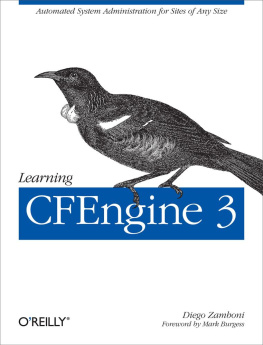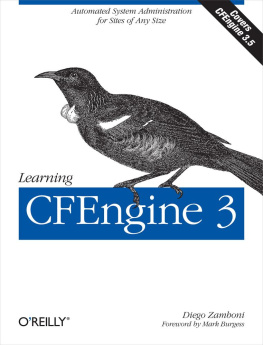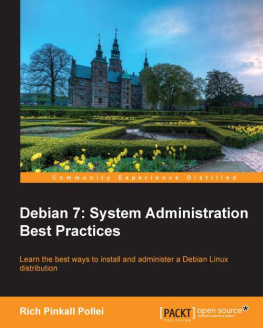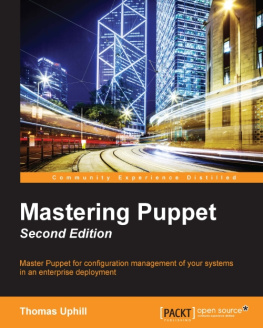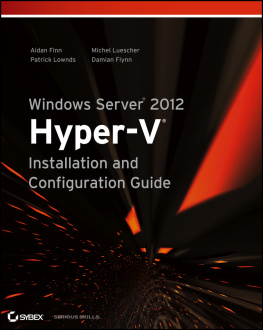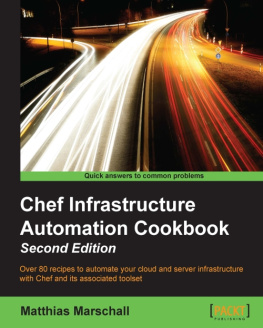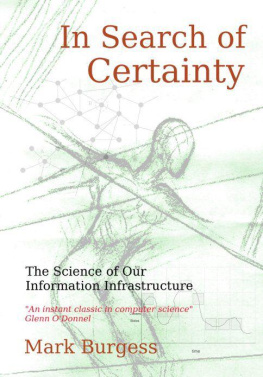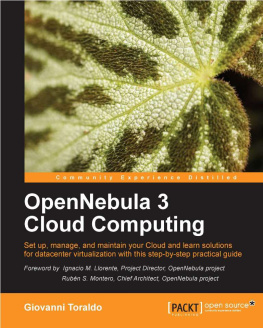Diego Zamboni - Learning CFEngine 3: Automated system administration for sites of any size
Here you can read online Diego Zamboni - Learning CFEngine 3: Automated system administration for sites of any size full text of the book (entire story) in english for free. Download pdf and epub, get meaning, cover and reviews about this ebook. year: 2012, publisher: OReilly Media, genre: Computer. Description of the work, (preface) as well as reviews are available. Best literature library LitArk.com created for fans of good reading and offers a wide selection of genres:
Romance novel
Science fiction
Adventure
Detective
Science
History
Home and family
Prose
Art
Politics
Computer
Non-fiction
Religion
Business
Children
Humor
Choose a favorite category and find really read worthwhile books. Enjoy immersion in the world of imagination, feel the emotions of the characters or learn something new for yourself, make an fascinating discovery.
- Book:Learning CFEngine 3: Automated system administration for sites of any size
- Author:
- Publisher:OReilly Media
- Genre:
- Year:2012
- Rating:5 / 5
- Favourites:Add to favourites
- Your mark:
Learning CFEngine 3: Automated system administration for sites of any size: summary, description and annotation
We offer to read an annotation, description, summary or preface (depends on what the author of the book "Learning CFEngine 3: Automated system administration for sites of any size" wrote himself). If you haven't found the necessary information about the book — write in the comments, we will try to find it.
CFEngine is the most mature and widely used tool for comprehensive configuration management. This book is devoted to CFEngine 3, released in 2009. The main audience for this book is experienced system administrators of null-to-medium expertise with CFEngine, although more advanced CFEngine users may also find useful snippets and techniques. Its goal is to guide you from installation to advanced examples and concepts by using examples and techniques that can be put to work straight away.
CFEngine was first released in 1993, and it has evolved over the years to address real needs in real systems, and to match the technological evolutions that have taken place, such as virtualization and cloud computing. CFEngine is fine-tuned to the features and design that make it possible to automate very large numbers of systems in a scalable and manageable way. CFEngine has been designed to be very resource-efficient, and it can run on everything from smartphones to supercomputers.
With the new version came a complete overhaul of its syntax and mode of operation, and with many new features such as Knowledge Management and support for virtual environments. CFEngine 3 is different from many other automation mechanisms in that you do not need to tell it what to do. Instead, you specify the state in which you wish the system to be, and CFEngine will automatically and iteratively decide the actions to take to reach the desired state, or as close to it as possible. Underlying this ability is a powerful theoretical model known as Promise Theory, which was initially developed for CFEngine 3, but which has also found other applications in Computer Science and in other fields such as Economics and Organization.
Diego Zamboni: author's other books
Who wrote Learning CFEngine 3: Automated system administration for sites of any size? Find out the surname, the name of the author of the book and a list of all author's works by series.

